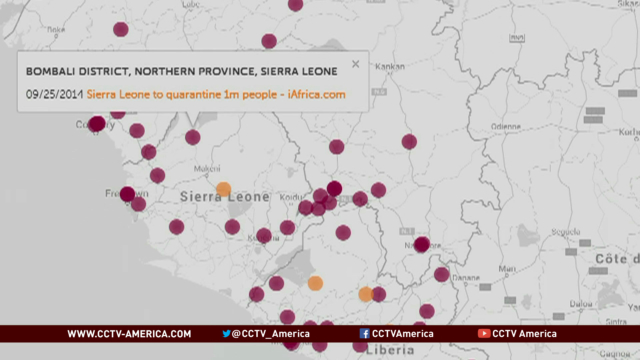With the rapid spread of Ebola, medical researchers, epidemiologists, and data scientists are working on ways to help physicians and aid groups halt the spread of the virus. CCTV America’s Patrice Howard reports from Boston.
Clark Freifeld is a co-founder of HealthMap, a Boston organization that tracks global diseases by gathering public information and mapping it for public use.
Freifeld and his team created an interactive Ebola map to spot a potential outbreak of Ebola. The colorful marks on the map are painting a picture of Ebola’s spread. The dots are portals to the most relevant news articles, blog posts, even tweets about Ebola from Africa to America. The more buzz Ebola gets in a region, the more dots appear.
“People say this is the one place where I can get access to the full timeline of events for Ebola,” Freifeld said.
A number of research groups like HealthMap are looking for new ways to gather data that could help physicians track Ebola’s spread to allow for a more targeted medical response.
Epidemiologist Caroline Buckee at Harvard University, believes that tracking Ebola is easier if we know where the population is going. She is creating movement models by tracking cell phone use.
“We can use mobility patterns to model the spread of infection and try to understand where the disease is going to spread in space and time,” Buckee said.
Each call bounces off a cell tower, which then creates a pinpoint that Buckee can put on a map to help medics determine how to get ahead of an unpredictable illness.
According to Buckee, cell phone data is just the beginning, and they will start to see more advanced technology like use of satellites to track Ebola.

 CGTN America
CGTN America
